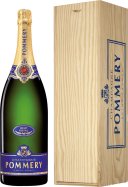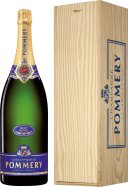Dalla Valle Vineyards Maya Cabernet Cabernet Franc
Henschke Hill of Roses Shiraz
HENSCHKE Hill of Roses Shiraz, Eden Valley Henschke Portfolio >
Domaine Comte Georges de Vogue Grand Cru
One of the two Grand Crus from this iconic Domain, this one the wilder of the family. The soils here are on gentler slopes, (less well-drained, less quickly warmed by the sun) than their stablemates. This lends the Bonnes-Mares a distinctive individuality in the portfolio. It is more purple, rather than ruby, and takes its energy from structure, rather than minerality. It's "unconventional and free-thinking says vigneron Eric Bourgogne.
Chateau Pavie
Another terrific success for the flagship estate (a 92-acre vineyard situated on the famed limestone and clay-rich slopes of Cote Pavie) of Chantal and Gerard Perse, the 2011 Pavie is composed of 70% Merlot, 20% Cabernet Franc and 10% Cabernet Sauvignon. 2011 may be the biggest, richest, most massive wine of the vintage. With thrilling levels of concentration, tremendous purity, high but sweet tannin, a skyscraper-like mouthfeel, and terrific intensity, depth and palate presence, this larger-than-life effort will require 5-8 years of cellaring, and should age effortlessly over the following 25-30 years.
Chateau La Mission Haut-Brion
Domaine Armand Rousseau Clos du Chateau
DOMAINE ARMAND ROUSSEAU Clos du Chateau , Gevrey-Chambertin
Domaine d'Eugenie Grand Cru
Clos Vougeot is renowned for being one of the finest red wines in Burgundy with superlative depth, richness and power. Domaine d'Eugenies Clos Vougeot comes off a small holding of 1.36ha within the large walled Clos Vougeot vineyard. The plot is located in one of the best positions at the top of the slope and is managed along biodynamic principles. The fruit is handpicked, 50% is then destemmed with fermentation taking place in small vessels, before undergoing maturation in approximately 90% new French oak barrels.
Château Pavie Saint-Émilion Grand Cru
Château Latour
Pommery Brut Royal Non-Vintage
Established in 1836, Madame Pommery is credited with creating the first vintage brut style of Champagne in 1874, at a time when most champagnes were excessively sweetened with sugar. This revolutionary dry style set the benchmark for the rest of Champagne and it is in this spirit that the style of Pommery endures; with each cuvée displaying sublime elegance, finesse and freshness. Pommery is one of the few Champagne Houses that produces their large formats in the actual bottle in order to allow for optimal ageing.


















